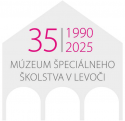Cerebral pulsy (CP)
The most common cause of physical impairment. It affects movement disorders.
The causes of CP are divided by the period of development:
a) Prenatal (before birth) risk factors:
internal influences – intrauterine infections, prematurity, oxygen deprivation in fetal blood
outside influences – X-ray, nicotine, alcohol, maternal strain, lack of adequate nutrition
b) Perinatal (during birth) risk factors – oxygen deprived children whose resurrection took more than 10 minutes at abnormal deliveries – Caesarean section, breech delivery.
c) Postnatal (after birth) risk factors – infant infections of central nervous system, inflammations of digestive, respiratory tracts, head injuries.
Forms of CP
a) Spastic (spasmodic)
diplegia/diparesis – affects lower limbs
hemiplegia/hemiparesis – the arm and leg on one side of the body are affected, mostly it is upper limb
quadriplegia/quadriparesis – affection of all four limbs
b) Non-spastic (feeble)
hypotonia/hypotonic – decreased (debilitated) muscle tone of torso and limbs
extrapyramidal (nonvolitional) – wry face appears, involuntary movement of head, torso and limbs
Associated disorders of CP:
developmental difficulties
mental disorders (a third is mentally disabled)
visual impairment, hearing loss, speech problems
learning difficulties (dyslexia, dysgraphia, dyscalculia)
apathy, emotional lability
epileptic seizures
teeth and palate anomalies
respiratory difficulties
social contacts restriction


